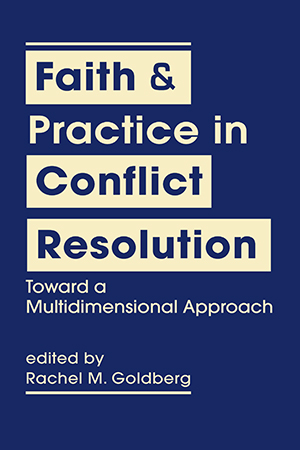
- 2016/227 pages
- A Kumarian Press Book
Faith and Practice in Conflict Resolution:
Toward a Multidimensional Approach
Hardcover: $68.50
ISBN: 978-1-62637-274-0
Ebook: $68.50
ISBN: 978-1-62637-505-5
What would the work of conflict resolution look like if practitioners not only recognized that it is impossible for them to be neutral—and that there are dangers in believing otherwise—but also brought their whole selves to the negotiation table?
Focusing on this question, the authors of Faith and Practice in Conflict Resolution introduce the work of pathbreaking individuals who have successfully moved beyond the constraints of the objectivist paradigm to tap into the insights that their spiritual roots, their emotions, and even their bodies can contribute. The book presents an important new framework for whole, multidimensional practice, along with concrete techniques for promoting peace.
Focusing on this question, the authors of Faith and Practice in Conflict Resolution introduce the work of pathbreaking individuals who have successfully moved beyond the constraints of the objectivist paradigm to tap into the insights that their spiritual roots, their emotions, and even their bodies can contribute. The book presents an important new framework for whole, multidimensional practice, along with concrete techniques for promoting peace.







